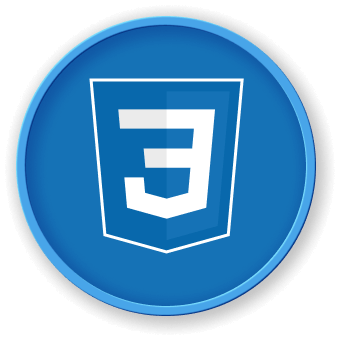Learn CSS with this structured Learning Path, ideal for web development beginners. These CSS courses provide a clear roadmap to master selectors, layout, and responsive design. Develop practical skills through hands-on, non-video exercises in an interactive CSS playground to create visually appealing and responsive websites.
TABLE OF CONTENTS
BASIC CONCEPTS
Fundamental concepts of CSS, including selectors, properties, values, colors, fonts, text styling, and basic styling principles.
Selectors in CSS are patterns used to select and style HTML elements. They can target elements by type, class, ID, attributes, and more.
Properties define the visual characteristics of elements. They include attributes like 'color', 'font-size', 'margin', and 'padding'.
Values are assigned to properties to specify how elements should be styled. Examples include 'red' for color and '20px' for size.
BASIC STYLING
Fundamental CSS styling techniques, covering colors, fonts, and text styling.
CSS offers various ways to specify colors, including named colors, hexadecimal values, RGB, and HSL color models.
Font properties control the typeface, size, and style of text. Web fonts and system fonts are commonly used.
Text styling properties like 'text-align', 'text-decoration', and 'line-height' affect the appearance of text content.
CORE LAYOUT
Essential layout concepts in CSS, covering the box model, margin, padding, borders, width, height, display property, and positioning.
The box model describes how elements are structured, including content, padding, border, and margin.
Margin and padding properties control spacing around elements, allowing for separation between elements.
Border properties define the border around elements, specifying its style, width, and color.
Width and height properties determine the dimensions of elements, such as 'width: 100px' or 'height: auto'.
The 'display' property dictates how elements are rendered, including block, inline, and inline-block.
Positioning properties like 'position' and 'float' influence the placement of elements within the layout.
ADVANCED LAYOUT
Advanced CSS layout techniques, covering Flexbox and Grid Layout for creating complex and responsive designs.
Flexbox is a CSS layout model for creating flexible and responsive designs by distributing space among elements in a container.
Grid Layout allows for the creation of two-dimensional grid-based layouts, making it easier to create complex designs.
INTERMEDIATE STYLING
Intermediate CSS styling techniques, including backgrounds, lists, tables, pseudo-classes, and pseudo-elements.
Background properties enable the styling of element backgrounds, such as setting colors, images, and gradients.
CSS can be used to style lists and tables, modifying their appearance and layout.
Pseudo-classes like ':hover' and ':nth-child' allow for dynamic styling based on user interaction and element positions.
Pseudo-elements like '::before' and '::after' create virtual elements for additional styling and content.
RESPONSIVE AND ADAPTIVE DESIGN
CSS techniques for creating responsive and adaptive web designs, including media queries and mobile-first design.
Media queries allow CSS rules to be applied based on the characteristics of the user's device, such as screen size.
DYNAMIC STYLING
CSS properties and techniques for creating dynamic and interactive web experiences, including animations, transitions, and transformations.
CSS animations enable the creation of smooth and visually appealing animated effects, like transitions, keyframes, and transforms.
Transitions specify how CSS property changes should be animated, such as smooth transitions between hover and normal states.
Transformations allow for 2D and 3D transformations of elements, including translations, rotations, scaling, and skewing.
CSS PREPROCESSORS
Tools and techniques for using CSS preprocessors like Sass or Less, including variables, mixins, nesting, and import/extend.
CSS preprocessors allow the use of variables to store and reuse values, making stylesheets more maintainable and customizable.
Importing and extending stylesheets and rules from one file to another helps manage and modularize CSS code.
CODING STANDARDS AND BEST PRACTICES
Guidelines and best practices for writing clean and maintainable CSS code, including the use of comments.
Adding comments to CSS code helps document styles, clarify intent, and make it more understandable for developers.
